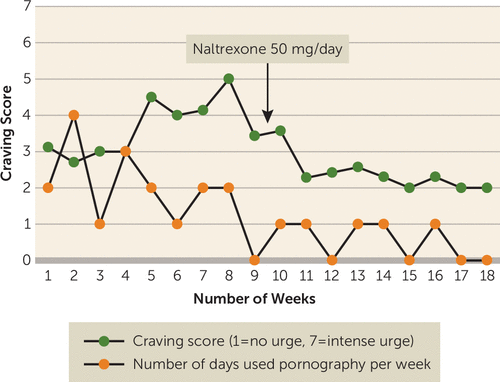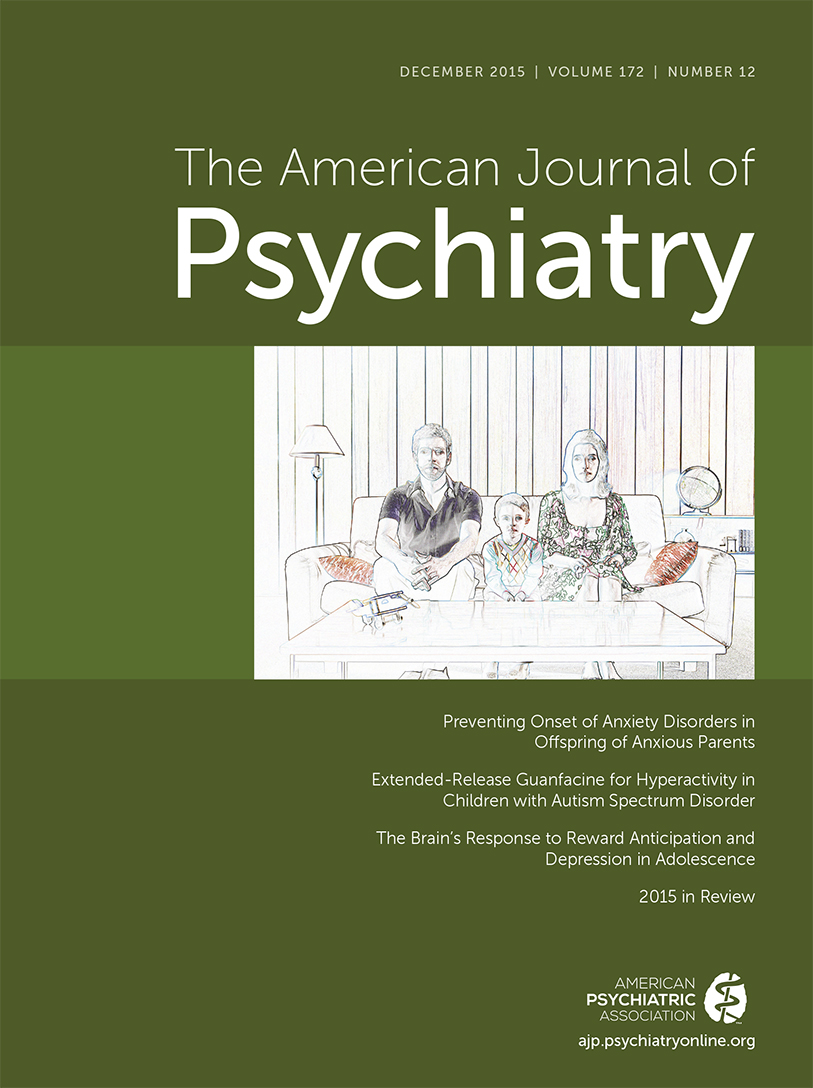Treatment of Compulsive Pornography Use With Naltrexone: A Case Report
To the Editor: Between 30%−50% of U.S. men watch pornography regularly, and only a small subset of viewers develop compulsive use. Compulsive pornography use is characterized by craving, behavioral impulsivity, social or occupational impairment, and higher rates of psychiatric comorbidity (1). In light of two recently published cases (2, 3) suggesting naltrexone, an opioid-receptor antagonist, may reduce the intensity of sexual urges and behaviors associated with nonparaphilic compulsive sexual behavior, we report a case of naltrexone as an adjunct to psychotherapy in a married, employed, heterosexual male veteran in his 30s who sought treatment for problematic Internet pornography viewing. Naltrexone’s effectiveness at reducing sexual urges to masturbate to pornography is largely unexplored.
Mr. D began using pornography regularly at age 13. During the intake interview, he reported compulsive masturbation to pornography for the previous 10 years despite numerous failed attempts to quit; he was viewing Internet pornography nearly daily for approximately 30 minutes. He reported a prior diagnosis of major depressive disorder and had no history of substance misuse, risky sexual behavior, or significant medical problems. He was not taking any prescribed medications.
Mr. D began attending weekly individual cognitive-behavioral therapy delivered by a doctoral-level clinical psychologist. For 18 weeks, he completed daily self-monitoring worksheets assessing urges to view Internet pornography (1=no urge, 7=intense urge) and whether he had viewed and masturbated to pornography. Despite reducing his baseline use of pornography by approximately 70%, Mr. D continued to report frequent sexual urges to masturbate to Internet pornography. Therefore, on the 10th week of treatment, he was prescribed 50 mg/day of naltrexone. Within 2 weeks of initiating medication, he reported subjective decreases in his urges to masturbate to pornography. As shown in Figure 1, during the 9 weeks that he took naltrexone, the intensity of his sexual urges significantly decreased, from a mean rating of 3.71 (SD=1.28) for weeks 1–9 to a mean rating of 2.37 (SD=0.80) for weeks 10–18 (t=6.93, df=124, p<0.0001; Cohen’s d=1.25). He also viewed pornography less often: 17 days in weeks 1–9, compared with 5 days in weeks 10–18 (χ2=7.04, df=1, 125, p<0.01; odds ratio=0.25, 95% CI=0.09–0.73). In addition, he resumed regular, satisfactory sexual intercourse with his wife.

FIGURE 1. Mean Scores of Craving for Pornography and Number of Days Viewed Pornography Each Week Pre- and Post-Naltrexone (50 mg/day)
Our findings suggest that naltrexone may be a useful adjunctive treatment for patients reporting difficulty managing sexual behaviors, such as excessive viewing of Internet pornography. A notable limitation of the current case report is that we did not employ a reversal (A-B-A) design with Mr. D. Additionally, further testing in a double-blind, randomized, placebo-controlled trial evaluating the efficacy and tolerability of naltrexone with (or without) psychotherapy for the treatment of problematic pornography viewing and other compulsive sexual behaviors is needed.
1 : Examining the psychometric properties of the Yale-Brown Obsessive-Compulsive Scale in a sample of compulsive pornography users. Compr Psychiatry 2015; 59:117–122Crossref, Medline, Google Scholar
2 : Internet sex addiction treated with naltrexone, in Mayo Clinic Proceedings. New York, Elsevier, 2008, pp 226–230Google Scholar
3 : Augmentation with naltrexone to treat compulsive sexual behavior: a case series. Ann Clin Psychiatry 2010; 22:56–62Medline, Google Scholar



